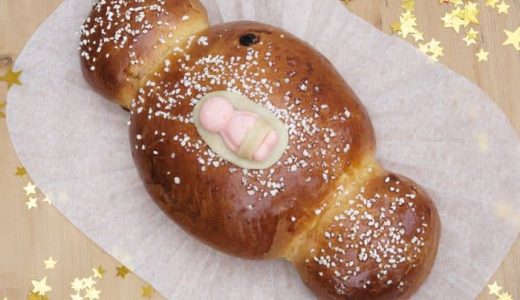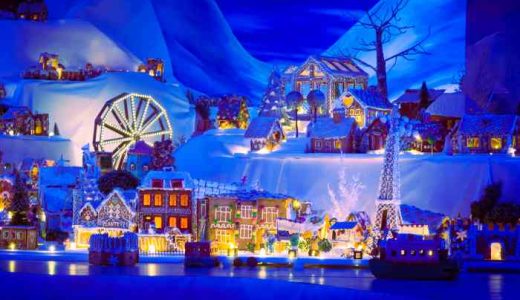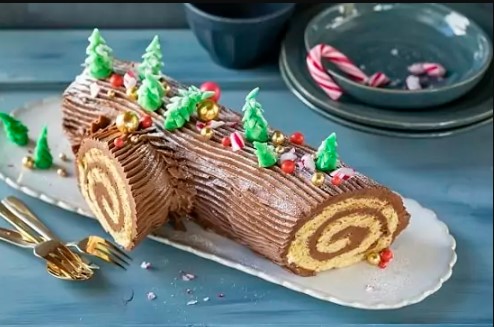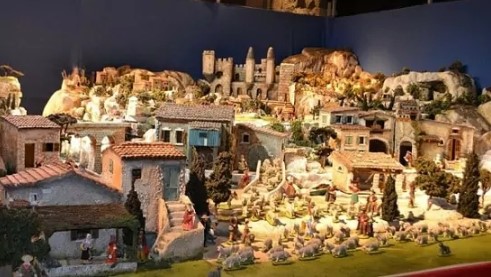How is the traditional French Christmas celebrated? Who is Père Noël and what is Réveillon?
7. 5. 2024
What will you learn in this article?
As in all European countries, Christmas is the most festive time of the year in France.
Do you find frog legs or something else on the table during the Christmas Eve meal?
And why are cherry pits poured with red wine?
Let’s see what Christmas in France has to offer.
Advent time in France
The Christmas atmosphere begins in France even before the arrival of December with the very popular tradition of advent calendars.
Children receive calendars before December, so they can look forward to December 1 when they open their first window, which usually contains chocolate.
Christmas markets take place during the Advent in France.
Town squares across France are lined with charming wooden cottages decorated with lights and ornaments, all selling local handicrafts and traditional French food.
And what would French Advent markets be without wine? A favorite is a French mulled wine called “Vin chaud rouge”.
For some families, the gift-giving season begins on December 6, i.e. Nicholas Day. On the eve of Saint Nicholas, French children put on their shoes by the Christmas tree and sing songs or hear stories about Saint Nick.
In the morning, all the good children wake up to find their shoes filled with sweets. If they are on the naughty kids list, they get a bundle of twigs with a ribbon!
Who brings presents in France?
Father Christmas, or Père Noël in French, brings presents to French children and on Christmas Day he travels around the world handing out presents. We can imagine him as a bearded grandfather with long white hair in a red suit.
It used to be the custom for French children to fill their shoes with carrots for Père Noël the donkey and place them by the fireplace, and in return, they would have them filled with presents in the morning. Today they already have their gift under the Christmas tree.
Père Noël comes down the chimney to leave presents for the good children who run to the tree on the morning of December 25th to see what Père Noël has brought them.
Some families open presents as early as the evening of December 24th, after eating Christmas Eve dinner or returning from Christmas mass.
It’s a Christmas tradition all over the world to write to Santa – but in France, he’s writing. The country passed a law in 1962 that required children who wrote a letter to Père Noël to receive a postcard back.
The Postal Service has kept it going for four decades, answering thousands of children on behalf of Père Noël.
Similar articles

How do Italians celebrate Christmas and what are their customs?

Do you know how Christmas is celebrated in Belgium? Learn about Belgian Christmas traditions in our article

Learn about Bulgarian Christmas customs and bake delicious baklava!

Get to know the magic of Norwegian Christmas and Julenissen the elf. God Jul!
Réveillon or traditional French Christmas Eve meal
Wondering what to eat in France for Christmas? Réveillon is one of the French Christmas traditions. It is the biggest meal of Christmas, eaten in the early evening of Christmas Eve. Food is usually served before or after midnight mass.
An appetizer is served before the main course, usually foie gras, caviar, smoked salmon, or oysters.
In the Savoy Alps, you can taste delicious cheese dishes such as fondue or raclette.
The main dish is poultry, most often turkey, usually served with seasonal chestnut stuffing. Some families choose roast pork, leg, or even venison as their Christmas dinner.
What would a feast be without a sweet spot? Popular desserts include chocolate, nougat, and fruit, but the truly festive dessert is the Bûche de Noël or Christmas log. It’s a log-shaped chocolate sponge roll that dates back to the 19th century.
In Provence, even 13 desserts are traditionally served on Christmas Day.
Their Christmas dinner table must look elegant and pleasant for the French. It is customary to place three candlesticks on the table to represent the Trinity. An interesting French Christmas tradition is that the French tie the ends of the tablecloth to prevent the devil from getting under the table.
If you’ve ever heard of the French custom of eating slowly and indulgently, Réveillon is the prime example. Dinner can last for hours and friends and family enjoy each other’s company over good food and great wine.

Burning cherry wood and other French traditions and customs
All over the country, you will see Advent wreaths made of fir and pine branches and decorated with red bows and pine cones.
If you want to see the largest Advent wreath in France, head to the stunning Strasbourg Cathedral!
One of the French Christmas traditions is burning cherry logs in the fireplace. An old tradition is that the log was brought into the house on Christmas Eve and red wine was poured over it, to make it smell pleasant when burning. It is customary to leave the log and candles burning all night.
There is always some snack prepared in French households during the night, in case Mary and baby Jesus pass by at night.
The Crèche de Noël, or Nativity scene is the most important of all Christmas decorations. These are no ordinary nativity scenes – you will find whole villages and many different characters such as a butcher, a baker, or a policeman, all built around a classic manger that tells the story of the birth of Jesus Christ.

Locals buy figurines at Christmas markets and display their Nativity in their homes until February 2. You can even find life-sized nativity scenes or reproductions of the birth of Jesus with live actors in cities across France.

